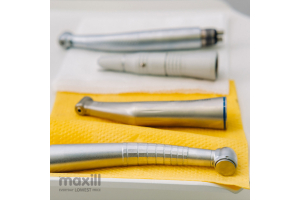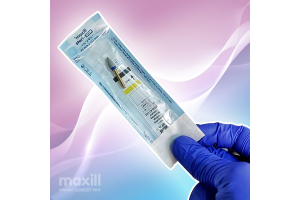Legionnaires Disease Risk with DUWL: Timelines of an Old Issue

July 1976 at the American Legion Convention at the Bellevue Stratford Hotel in Philadelphia, Legionnaires was named and identified as the cause of an outbreak of severe pneumonia with 200 cases and 29 deaths (3) (5). The outbreak was linked to the inhalation of aerosolized contaminated water (3)(5). A milder infection caused by the same type of Legionella bacteria is called Pontiac fever. Rewinding in time, in 1968 in Pontiac Michigan, Pontiac Fever was named and identified as an outbreak of influenza-like illness, identified by people who worked at & visited the city’s health department and had inhaled aerosols from contaminated water (3). Legionnaires' disease is an acute bacterial disease, causing death in 5% to 30% of cases (4). The Government of Canada’s Legionella site, states the following:
“Cases of Legionnaire’s disease may be difficult to detect because very few of the people exposed to the bacteria get infected (5). For instance, if 100 people are exposed to Legionella, fewer than 5 of them will get Legionnaire’s disease (5). On the other hand, in an epidemic of Pontiac fever, if 100 people are exposed, 95 of them are likely to become ill (5).”
On October 18, 2018 - 12:00pm the Windsor Essex Health Unit released a statement of active cases of legionella in the surrounding area (2). In 2020 the city of Vancouver health officials had a concern with legionnaires disease calling it a “concerning cluster”. Vancouver health officials state it is common to see 15 cases per year (1). Detection of legionella is a mandatory reportable disease, according to Health Protection and Promotion Act, R.S.O., 1990. All clinically diagnosed, probable and confirmed cases must be reported to the Health Unit by the next working day (2).
Legionnaires has an incubation period of 19 days and surfaces as pneumonia symptoms (2). It is contracted by two means, via inhalation of aerosolized water droplets containing the bacteria and aspiration of contaminated water. It is not transmissible person to person and most exposures will not render any illness. Elderly, smokers, and immunocompromised people fall at the greatest risk level. The only way to differentiate between pneumonia and Legionnaire’s is to obtain both a sputum culture and a urinary antigen test (2). As new respiratory pathogens emerge, and looking at, for example, the signs and symptoms of SARS CoV-2, testing is important to rule out which microorganism is the causative agent (2). Three key screening questions are typically asked to rule out the need for legionnaires testing:
- Do you work in the produce department of a grocery store or deliver produce to that department?
- Have you stayed at a hotel and showered or gone into a hot tub?
- Have you had a visit to the dental office?
What do they all have in common? Small water lines with the capability of delivering water through narrow openings.
In 1963 a dentist by the name of Dr. G.C. Blake published the first report of bacterial contamination in a dental water system. Dr. Blake made this discovery when he introduced an air-driven highspeed handpiece that required water to cool the handpiece. The water was in a separate reservoir, and he noticed the water became quickly contaminated with bacteria, what we refer to now as "biofilm". He knew there was a problem, and he solved the biofilm issue 57 years ago using chemical germicides to reduce the bacterial count in the water reservoir.
The timeline really needs to be highlighted as to 57 years ago DUWL were a hot topic and here we are still discussing it now! In more relevant times, Dr. Jean Barbeau in 2000 in the Canadian Dental Association Journal published Waterborne Biofilms and Dentistry: The Changing Face of Infection Control (J Can Dent Assoc 2000; 66:539-41) alerting dental professionals to realize biofilm is real and that it elevates the risk of the presence of legionella.
In 2006, Dr. Shannon Mills authored Dental Waterlines: A Decade in Review for Inside Dentistry. Dr. Mills purposely set out to compare what had unfolded for compliance in 10 years specific to the status of science, technology, and public policy related to DUWL. Scientific evidence demonstrated water produced by dental units and other dental devices was frequently colonized with high numbers of bacteria. Dr. Mills, points out two articles published in the 1980s revealing dental professionals were significantly more likely to carry antibody markers of exposure to Legionella bacteria than the general population. The most likely source of this exposure was the water/aerosol from DUWL and highspeed handpiece. On the technology and policy element, the panelists involved in Dr. Mills research, understood improving the quality of water used in dentistry would require changes on the part of regulatory standards, clinicians, and dental manufacturers.
The development of engineering controls and quality products to tackle biofilm in a small diameter tubing, falls under the responsibility of the manufacturers. February 1996, the American Dental Association in the ADA White Paper, posed a challenge to both researchers and dental manufacturers, asking by the year 2000, to improve the design of equipment and products to address water quality. Dental manufacturers listened to the 2000 call out and created viable solutions to attack the biofilm issue and mitigate the risks of Legionnaires. maxill heard the message loud and clear and created an entire system for DUWL. Please visit this link for more information on the maxill H20 complete DUWL maintenance system.
Cited Resources:
- Andrew Weichel. 'Concerning' cluster of legionnaires' disease cases detected in New Westminster. https://bc.ctvnews.ca/concerning-cluster-of-legionnaires-disease-cases-detected-in-new-westminster-1.5093476?cache=%2Fget-a-plan-before-withdrawing-from-an-resp-financial-advisers-1.4055455
- Confirmed Cases of Legionellosis. Windsor Essex Public Health Unit. https://www.wechu.org/updates-alerts/confirmed-cases-legionellosis
- Legionnaires and Pontiac Fever. https://www.uspharmacist.com/article/legionnaires-disease-and-pontiac-fever
- Middlesex Health Unit. Legionnaires Fact Sheet. https://www.healthunit.com/legionnaires-disease
- Government of Canada. What is Legionella? https://www.canada.ca/en/public-health/services/infectious-diseases/legionella.html





